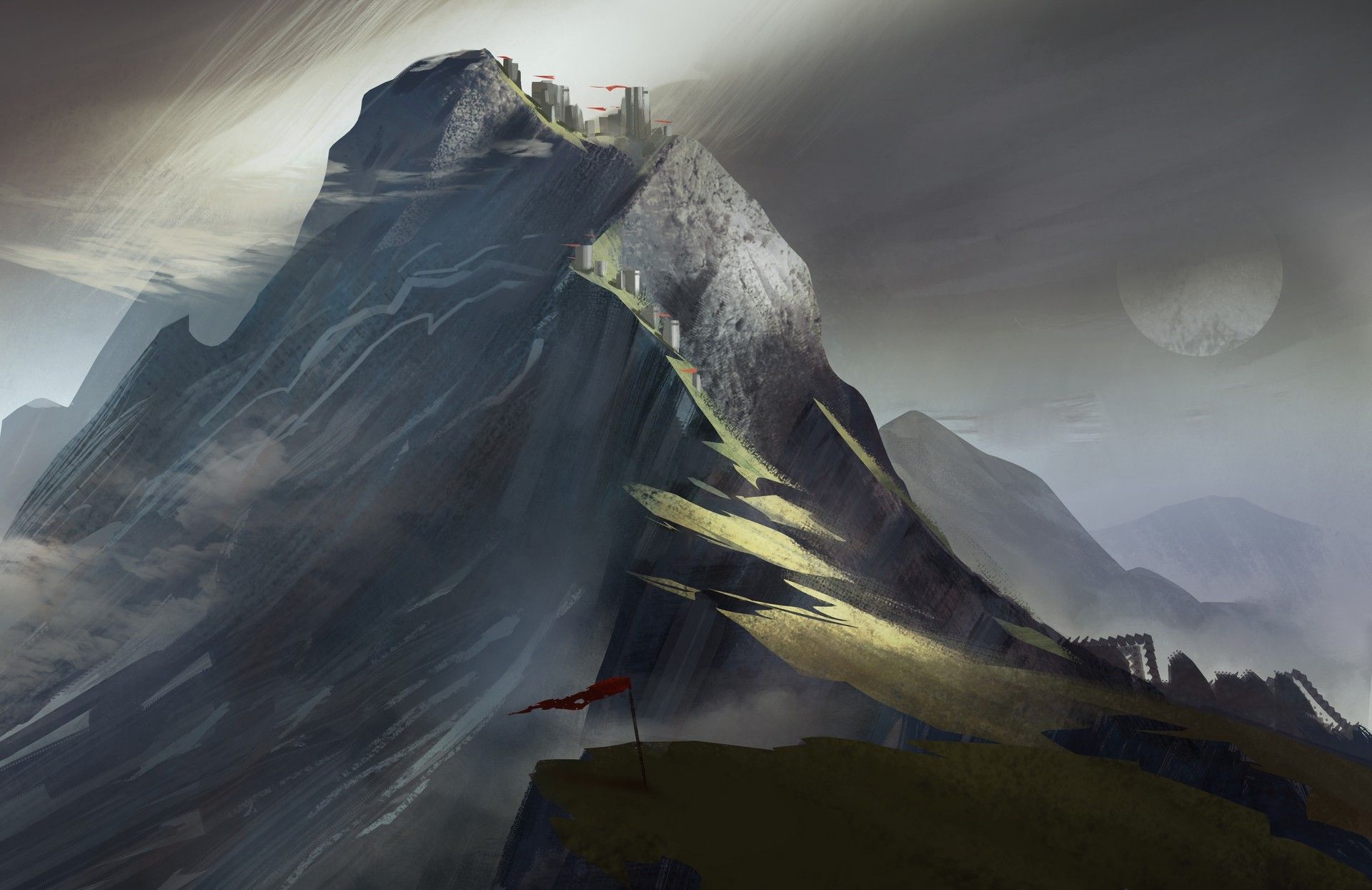The Seat of Judgement
Originally a place where chimeras judged each other for capital offenses, the Seat of Judgement has, since the Fall, also been a blood-stained execution ground, a fortress, a prison, and a tomb. It has long since been abandoned, with only the brave adventurer here and there daring to climb the mountain beneath it to poke through ancient treasures or lay bare the truth behind rumors of dragons roosting at the summit. But all eventually come back either disappointed... or too horrified to speak of it.
Purpose / Function
During the Era of Dreams, the Seat of Judgement was a neutral ground for the chimera city-states to hold sanctioned tribunals. A kind of criminal high court would use the venue to hear cases brought before them by solicitors and prosecuters. The judges of the court were representatives from the major chimera city-states of Abia. Normally, according to surviving records, court at the Seat wasn't convened unless a case involving multiple city-states arose. For instance, an accused person fleeing from one city-state, seeking refuge in another, and then subsequently being arrested. To prevent hostility between authorities of different factions, the Seat served as a neutral international legal system. Further, to prevent it from being bogged down by petty crimes, they would only hear cases involving grevious offenses, such as treason or assassination.
According to accounts that have been recovered since the Fall, scholars believe anywhere from 300-600 chimeras were convicted of high crimes at the Seat of Judgement since its construction in 3800 BA and the Fall around 1550 BA. This is an astoundingly low number, suggesting that most crimes one would consider serious—like murder, rape, or torture—must have been handled by city-state judicial systems or kept off of the Seat's docket for political reasons.
Architecture
The Seat itself is a large, circular stone porch constructed at the peak of Mt. Aster. This was originally called "the Truth's Altar" (now, it is known as "the Blood-swept Altar"). Seven stone thrones, approximately 8 meters wide and 20 meters tall, are positioned equidistant along the circular edge of the porch. Likely, the judges themselves did not sit on these thrones, as they are far too large for practicality, and must have only served as monumental symbols. Today, only two of these thrones are in near-pristine condition, with the others having suffered severe damage from time, weather, and abuse by later occupants of the mountain.
In the center floor of the altar rests a colored mosaic depecting the ancient chimeras' preferred image of the the great astral Azra, who reigned over the divine virtue of order. Here, he is shown to wield a sword in one hand and a golden balance in the other. One might think Ahriman would be a better symbol for a place like the a court, as his virtue was justice, but the Seat was likely constructed well after his perported fall from grace in the chronicles of Astralian lore.
Just below the summit and the altar is a great fortress, but the architecture sorely departs from any ancient chimeric design. Bastion se Valenroux occupies most of the plateau on the mountain's northeast face. The fort in its entirety occupies around 1.7 million square feet of the mountainside, complete with stonebrick walls and battlements, towers and turrets, and several gate houses. Outlying extension of the fort extend down the shallow incline of the mountain, where detached gatehouses guard the path up to the summit.
History
Bastion se Valenroux was constructed by an early human king during the Void Years. Inside, he imprisoned hundreds of chimera aristocrats from the fallen city-states, where he personally carried out unilateral death sentences and oversaw the execution of nearly every prisoner. The fort's original purpose was simply mass incarceration; a dungeon that could confine up to a thousand political prisoners. But it was never completely filled as executions happened daily, and the executioner's axe swung enough times between dawn and dusk to see the inner courtyard turn into "a pool of blood that washed up to your ankles".
Today, Valenroux sits empty. It ceased operating as a prison when the human kingdoms, after being mostly established near the end of the Void Years, officially enacted slavery and subdued the remaining chimeras with dark magic. However, it didn't completely lose meaning until the end of the Red-Violet Wars, until which time it served as a strategic military garrison. Castere, Nexus, and Practus have all occupied the fort at one point in history or another, whether to claim an advantage against each other before the imperial age, or in support of the Arcanaan Empire's war efforts against the Nasir Dominion.



